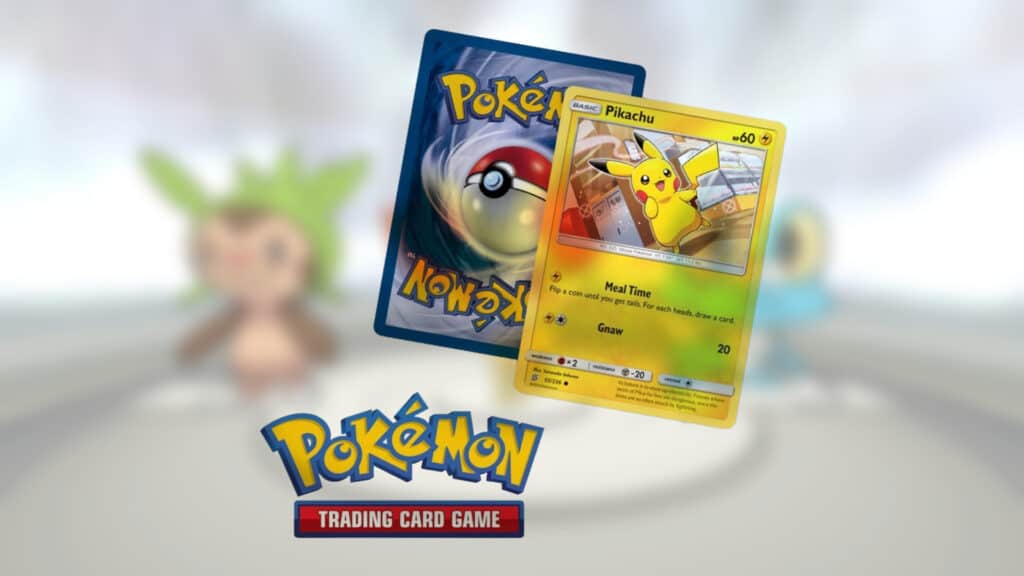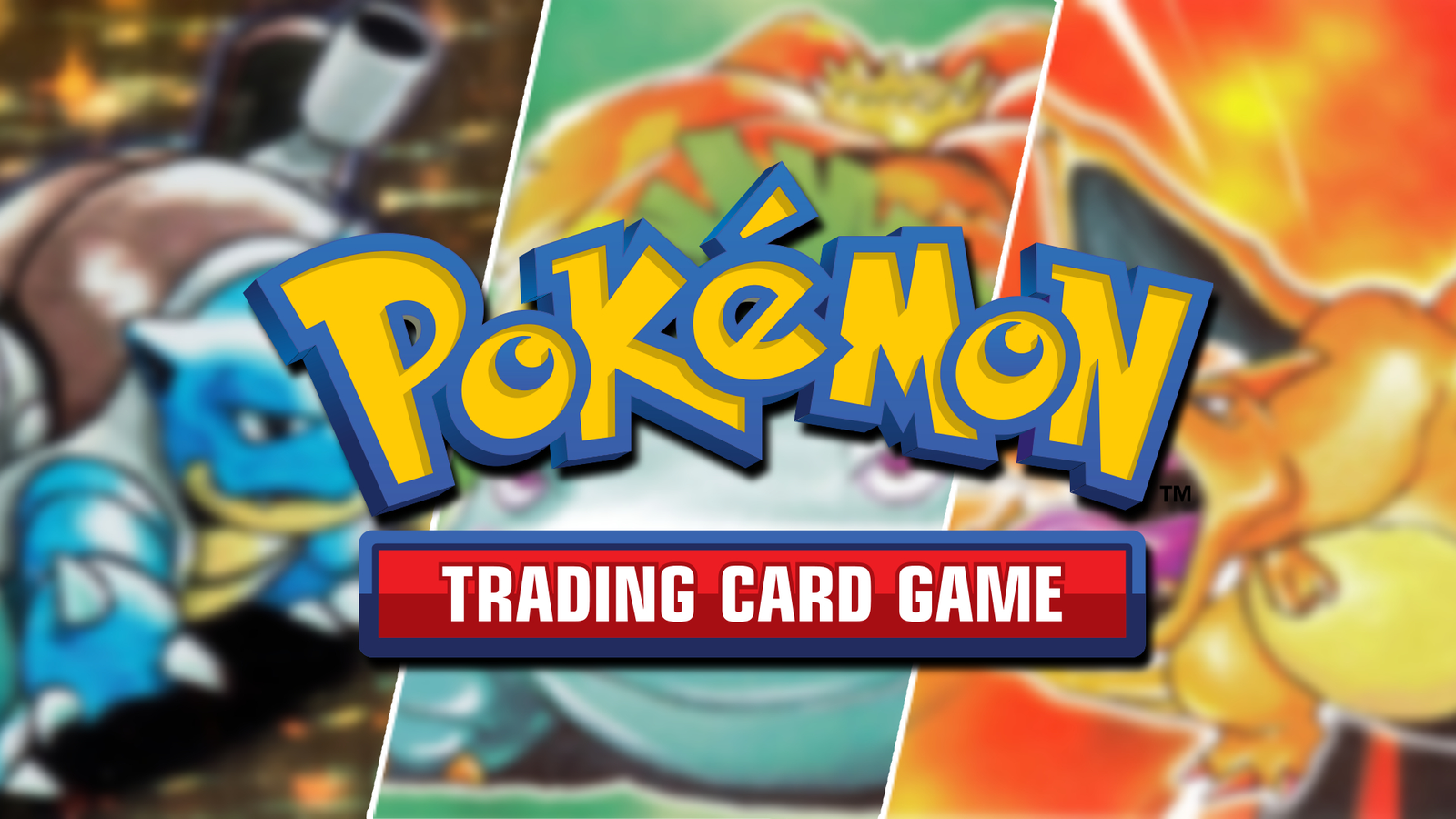On February 27th, 2024 The Pokemon Company revealed a new way to play the Pokemon Trading Card Game. Pokemon Trading Card Game Pocket is coming soon to mobile devices this year. As exciting as this news is, the release does feel a bit redundant since there is already a way to play the trading card game online. It even has Windows and Mac support which this new title does not. I don’t anticipate the current way to play to go anywhere, just look at Konami and Yugioh. The Yugioh franchise also has two different ways to play their card game online. For any gamers who are interested in the Pokemon Trading Card Game now is the perfect time to get invested and we got you covered. Here is an extensive guide on how to play The Pokemon Trading Card Game online.

The Rules
The Pokemon Trading Card Game is pretty simple. The goal is to battle your opponent’s Pokemon and take all of their Prize cards. If your opponent has no Pokemon left in play, or can’t draw any more cards at the beginning of their turn, you win. Multiple win conditions add depth to the card game and new players should keep this in mind when crafting their decks. There are 3 different types of cards: Pokemon cards which are separated into Basic, Stage 1, and Stage 2 categories, Energy Cards, and Trainer Cards which represent items and other miscellaneous effects. Prize Cards are 6 cards that each player will set aside face down from the top of their deck while setting up to play. Every time you knock out an opposing Pokemon you can take one of your Prize cards and put it into your hand.’
Each player starts with a deck of 60 cards and each player draws 7 cards at the beginning of the game. Each player also has a discard pile. Cards taken out of play go to the discard pile unless the card states otherwise.
Card Energy Types
To defeat your opponent’s Pokemon, you must use attacks or abilities. However, these require Energy cards. There are 11 Energy types and each one powers different attacks. The Energy types are:
- Grass – Grass-type Pokemon usually have attacks that heal themselves or poison their opponents.
- Fire – Fire-type Pokemon tend to deal heavy damage. They also can burn their opponents, but the downside is their attacks need time to build up again.
- Water – Water-type Pokemon can manipulate Pokemon on the other team.
- Lightning – Lightning-type Pokemon can bring back used Energy from the discard pile AND paralyze their opponents.
- Psychic – Psychic-type Pokemon revolve around putting Pokemon to sleep, confusing them, or poisoning them.
- Fighting – Fighting-type Pokemon take big risks to deal extra damage such as flipping coins for combos.
- Darkness – Darkness-type Pokemon have attacks that make opponents discard cards. They also can poison your opponent’s Pokemon.
- Metal – Metal or Steel-type Pokemon can resist attacks for longer than most other Pokemon.
- Fairy – Fairy-type Pokemon can make the opponent’s Pokemon attacks less effective.
- Dragon – Dragon-type Pokemon have very strong attacks but usually need more Energy types to use them.
- Colorless – Colorless-type Pokemon have lots of different moves and they tend to work in any deck.
Set-Up
When setting up the board to play it’s always good to show good sportsmanship by shaking hands with your opponent. Then the players flip a coin and the winner of the coin toss decides which player goes first. Shuffle your deck and draw the top 7 cards. The players then check if they have any Basic Pokemon in their hand. If so, put one of the basic Pokemon face down as your active Pokemon. Then you can put up to 5 more Basic Pokemon face down as Benched Pokemon.
If a player doesn’t have any Basic Pokemon, they must reveal their hand to their opponent and shuffle it back into their deck. Rinse and repeat until you have at least 1 Basic Pokemon. Each time your opponent shuffles their hand back into their deck for this reason, you may draw an extra card. After the active and benched Pokemon is set, put the top 6 cards of your deck off to the side faced down as your Prize cards. Finally, both players can flip their active and benched Pokemon face up and start the game.
Turn Economy
Each turn has 3 main parts. When it’s your turn you’ll draw a card first. Then you can do any of the following in any order:
Basic Pokemon Cards
Put Basic Pokemon cards from your hand onto your Bench (as many as you want up to 5).
Evolve Pokemon
Evolve your Pokemon (as many as you want). If you have a card in your hand that says Evolves from, then you must have the precursor card in play at the beginning of your turn before playing the evolution card. You may evolve Basic Pokemon to Stage 1 or Stage 1 to Stage 2. When a Pokemon evolves it keeps all attached cards and any damage counters on it. Any status ailments affecting a Pokemon end when it evolves. Evolved Pokemon cannot use the attacks or abilities of its previous forms unless a card says so. Neither player can evolve a Pokemon on its first turn in play but you can evolve both active and benched Pokemon. Neither player can evolve a Pokemon on their first turn unless a card says so.
Energy Cards
Attach an Energy card from your hand to one of your Pokemon (once per turn).
Trainer Cards
Play Trainer cards (as many as you want, but only one Supporter card and one Stadium card per turn). The player who goes first cannot play a Supporter card on their first turn.
Active Pokemon
Retreat your Active Pokemon (only once per turn). To retreat, you must discard an Energy card from your active Pokemon for each symbol listed in its retreat cost. If no symbol is listed it retreats for free. You must switch the retreating Pokemon with a Pokemon from your Bench. Keep all damage counters and all attached cards with each Pokmon when they switch. Pokemon that are asleep or paralyzed cannot retreat. Retreating Pokemon lose Special conditions and any effects from attacks. You can still attack after retreating with your new Active Pokemon.
Abilities
Use Abilities (as many as you want). Abilities are NOT attacks, so you can still attack if you use an Ability. You can use Abilities from both your active and benched Pokemon.
Attacking
After doing any of the above actions you can attack before ending your turn. You need energy to attack and each attack has different energy requirements. Usually, the energy type required is the same as the Pokemon’s type however if the card has a colorless symbol in its energy requirements you can use any energy card to fulfill that requirement. Some Pokemon have weakness or resistance to certain types, which you can find in the lower-left corner of the card. If the attack deals damage, your opponent’s active Pokemon takes more damage if it has a weakness to the attacker’s type. It takes less damage from a Pokemon if it has resistance to that Pokemon’s type.
When you attack, the opponent’s active Pokemon gains a damage counter for every 10 damage it receives. If a Pokemon has total damage at least equal to its HP it is knocked out. Once a Pokemon is knocked out, that player puts it and all cards attached to it in the discard pile.
Pokemon Checkup
After a player attacks, there’s a special phase of play known as the Pokemon Checkup phase. Before the game continues to the next player, you’ll need to take care of Special Conditions in the following order:
- Poisoned
- Burned
- Asleep
- Paralyzed
You’ll also need to make sure any effects that are meant to happen during this phase are applied as well.
Status Ailments
Asleep
Turn the Pokemon counterclockwise to show that it is asleep. While asleep this Pokemon cannot attack or retreat. During Pokemon Checkup, flip a coin. If it’s heads the Pokemon recovers and if it’s tails, it stays asleep.
Burned
When a Pokemon is burned, place a burn marker on it. During Pokemon Checkup, put 2 damage counters on the burned Pokemon, then flip a coin. If heads, the Pokemon recovers.
Confused
Turn a confused Pokemon with the top of the card facing you to show that it is confused. If your Pokemon is confused they must flip a coin before attacking with it. When it’s heads, the attack works as intended. If it’s tails, the attack doesn’t happen, and you put 3 damage counters on the confused Pokemon.
Paralyzed
Turn the Pokemon clockwise to show that it is paralyzed. If a Pokemon is paralyzed it cannot attack or retreat. After its owner’s next turn, it recovers during Pokemon Checkup.
Poisoned
When a Pokemon is poisoned put a poison marker on it. During Pokemon Checkup, put a damage counter on your Poisoned Pokemon.
The image featured at the top of this post is ©Pokemon TCG Logo.
